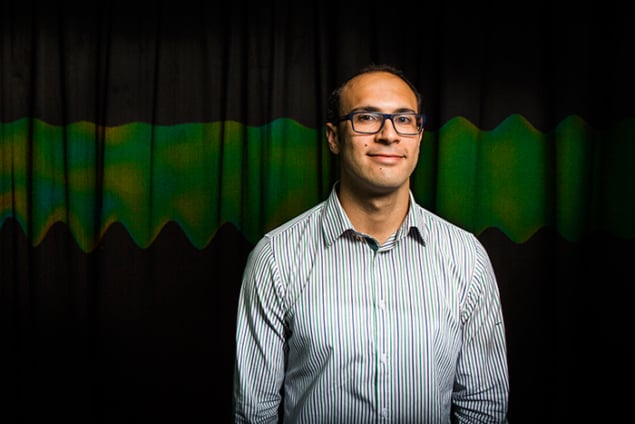
A new class of sound wave that can dramatically improve the delivery of inhaled drugs and vaccines has been identified by researchers at RMIT University in Melbourne, Australia. Surface-reflected bulk waves (SRBWs) are a hybrid of bulk waves and surface waves. The team has already demonstrated that they can slash the time required to administer inhaled therapeutics through a nebulizer.
Nebulizers break medical suspensions and solutions into vapour that can be inhaled. They deliver drugs to patients with life-threatening or debilitating lung conditions such as cancer, asthma and cystic fibrosis.
In ultrasonic nebulizers, a piezoelectric chip converts electricity into ultrasonic vibrations that vaporize the liquid. These devices have considerable potential because they generate small aerosols that are good for delivery deep into the lung and could be used for pulmonary delivery of other therapeutics, such as vaccines. But their usefulness is limited because they produce vapours at very slow rates.
Stress and heat
The problem is that they rely on surface acoustic waves (SAWs), which travel across the surface of the piezoelectric material, to vaporize the liquid. The nebulization rate can be increased by boosting the intensity to increase the amplitude of the SAWs – but this causes the devices to fail. “A chip with surface acoustic wave alone cannot sustain enough vibrations and heat without failure because the stress and heat – due to vibrations – are constrained within the top layer of the chip,” explains Amgad Rezk, who led the research at RMIT.
To create more powerful waves, Rezk and his colleagues harnessed the power of the bulk waves that leak from the surface waves through the piezoelectric material. These acoustic waves, which cause the entire substrate to vibrate as one entity, are normally suppressed in nebulizers, but the researchers found they could be exploited in combination with SAWs to create a hybrid wave that can drive extremely efficient nebulization.
These SRBWs are created when a bulk wave propagates through the device and creates a travelling surface wave on the other side, before reflecting back and constructively recombining with the initial SAW. The surface waves continue to leak, creating multiple reflections that further strengthen the SRBW.
Key parameter
The key parameter for creating the different waves is the ratio between the substrate thickness and the acoustic wavelength, which is controlled by altering the resonant frequency of the device. When the frequency is relatively high, the wave is confined to the surface, while a low frequency generates bulk waves through the thickness of the substrate. Bulk waves are known to eventually converge into surface waves, and the researchers found that when they used a frequency that lies between the two, the hybrid SRBWs formed.
They used SRBWs in a new device named a HYbriD Resonance Acoustic, or HYDRA. It is able to produce a more powerful, higher-frequency wave than other ultrasonic nebulizers because the energy isn’t confined to the surface. “The heat distribution is more uniform throughout the chip and therefore much higher nebulization rates are accessible,” says Rezk. While nebulization rates with SAWs are between 0.2 and 0.4 ml per minute, the researchers achieved rates of almost 8 ml/min with the HYDRA device. They claim this could cut the time required for inhaling some vaccines from 30 minutes to as little as 30 seconds.
Rezk says that it opens up the possibility of a “handheld, portable, quiet nebulizer” for patients, which delivers a “controlled dosage and drop size reaching deep into the lungs, without wasting medicine in the throat and mouth”.
Interesting future
Andreas Winkler, an acoustofluidics researcher at the Leibniz Institute for Solid State and Material Research in Germany, says the research is interesting with regards to possible future applications of microacoustic fluid atomisers.
He cautions, however, that one major issue with the application of acoustic fluid atomization is “the size of the droplets produced”. “While it is known for SAW-based devices that the produced droplet size is in the regime required for deep lung inhalation and can be influenced by parameters like power and wavelength, bulk wave devices are much more restricted,” he explains. “Unfortunately, no results of droplet size measurement were published, so it is not proven that the droplet size can be controlled and that it lies in the size range required for inhalation.”
The research is described in Advanced Materials.



